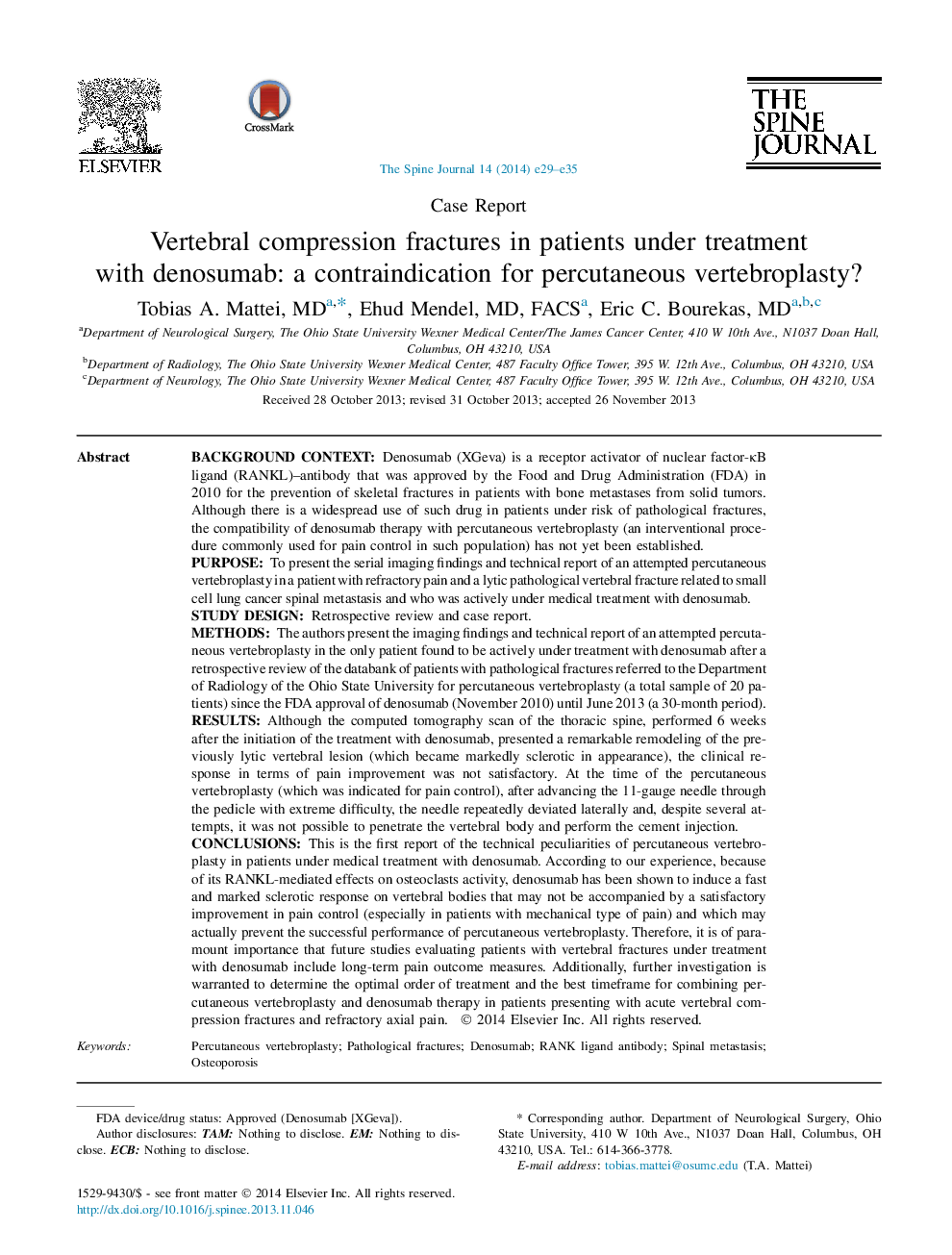| کد مقاله | کد نشریه | سال انتشار | مقاله انگلیسی | نسخه تمام متن |
|---|---|---|---|---|
| 4097818 | 1268598 | 2014 | 7 صفحه PDF | دانلود رایگان |
Background contextDenosumab (XGeva) is a receptor activator of nuclear factor-κB ligand (RANKL)–antibody that was approved by the Food and Drug Administration (FDA) in 2010 for the prevention of skeletal fractures in patients with bone metastases from solid tumors. Although there is a widespread use of such drug in patients under risk of pathological fractures, the compatibility of denosumab therapy with percutaneous vertebroplasty (an interventional procedure commonly used for pain control in such population) has not yet been established.PurposeTo present the serial imaging findings and technical report of an attempted percutaneous vertebroplasty in a patient with refractory pain and a lytic pathological vertebral fracture related to small cell lung cancer spinal metastasis and who was actively under medical treatment with denosumab.Study designRetrospective review and case report.MethodsThe authors present the imaging findings and technical report of an attempted percutaneous vertebroplasty in the only patient found to be actively under treatment with denosumab after a retrospective review of the databank of patients with pathological fractures referred to the Department of Radiology of the Ohio State University for percutaneous vertebroplasty (a total sample of 20 patients) since the FDA approval of denosumab (November 2010) until June 2013 (a 30-month period).ResultsAlthough the computed tomography scan of the thoracic spine, performed 6 weeks after the initiation of the treatment with denosumab, presented a remarkable remodeling of the previously lytic vertebral lesion (which became markedly sclerotic in appearance), the clinical response in terms of pain improvement was not satisfactory. At the time of the percutaneous vertebroplasty (which was indicated for pain control), after advancing the 11-gauge needle through the pedicle with extreme difficulty, the needle repeatedly deviated laterally and, despite several attempts, it was not possible to penetrate the vertebral body and perform the cement injection.ConclusionsThis is the first report of the technical peculiarities of percutaneous vertebroplasty in patients under medical treatment with denosumab. According to our experience, because of its RANKL-mediated effects on osteoclasts activity, denosumab has been shown to induce a fast and marked sclerotic response on vertebral bodies that may not be accompanied by a satisfactory improvement in pain control (especially in patients with mechanical type of pain) and which may actually prevent the successful performance of percutaneous vertebroplasty. Therefore, it is of paramount importance that future studies evaluating patients with vertebral fractures under treatment with denosumab include long-term pain outcome measures. Additionally, further investigation is warranted to determine the optimal order of treatment and the best timeframe for combining percutaneous vertebroplasty and denosumab therapy in patients presenting with acute vertebral compression fractures and refractory axial pain.
Journal: The Spine Journal - Volume 14, Issue 6, 1 June 2014, Pages e29–e35
